By buying second hand cars instead of cars fresh from the dealer's showroom, you can often save a lot of money. But if you're not careful, you can also lose a lot of money on used cars. You have to know what you're doing. Used car buying is a skill that you need to learn. Either through your own experience, or through other people's experience.

Buying Used Cars For Sale - How To Save A Lot Of Money
by JayCarbone
Cars are expensive, but most people eventually get to a point in their life where they need to have one. You can save money by buying used cars instead of new ones.
The Problem With New Cars
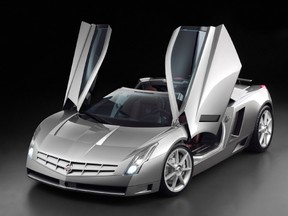 While the temptation to buy, own and drive a new car is a very tempting one, the problem with new cars is that they are just too over priced. A new car will easily cost you at least $10,000. And that's usually the price tag for a smaller than average car.
While the temptation to buy, own and drive a new car is a very tempting one, the problem with new cars is that they are just too over priced. A new car will easily cost you at least $10,000. And that's usually the price tag for a smaller than average car.
Most people want a more modern car that's at least medium sized or larger. In this case, you can expect to have to pony up $20,000 up to $30,000 or sometimes even more.
But keep in mind that the famous and much beloved 'new car smell' will be gone from your car in a matter of weeks. And there's something else that's going to be gone from your new car in a matter of weeks: at least half of its value.
A new car's price tag drops by a few thousand bucks the instant you roll it out of the garage dealer's showroom. Buying a new car is the most destructive and costly form of financial depreciation there is.
It's no wonder that, in these times of ongoing financial recession, more and more would-be car buyers are looking around for old cheap cars for sale, rather than new ones.
The Problem With Used Cars
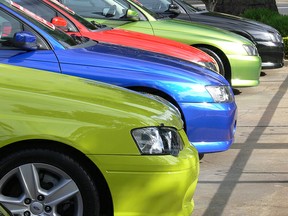 So if buying new cars is a bad idea, then buying used cars must automatically be the end all solution to all your car troubles, right?
So if buying new cars is a bad idea, then buying used cars must automatically be the end all solution to all your car troubles, right?
Wrong!
There's a problem with used cars as well. And that problem is... they're used! As opposed to a new car, a used car will have seen a certain amount of wear and tear. The amount of wear and tear that a car has been through varies from one situation to the next.
Not all car owners are created equal. The fact of the matter is that some people drive more carefully and maintain their car better than some other people. It's a fact of life that will never, ever change.
Therefore, it is possible that you buy a used car which looks alright on the outside, but is actually pretty banged up on the inside. And you don't want your newly bought second hand vehicle to break down on you the day after you bought it. This would cost you money and that's exactly the problem we're trying to prevent!
If you want to save money on cars by buying used ones, you're going to have to prepare yourself for closing a deal. Buying used cars is a skill that you learn and at which you can get better.
Nothing can ever replace experience. But internalizing the guidelines that I am about to bestow upon you right now, you will place yourself ahead in the game. Pay attention, because this can really save you a lot of money!
1. Compare Cars On The Internet Before Physically Visiting A Dealer
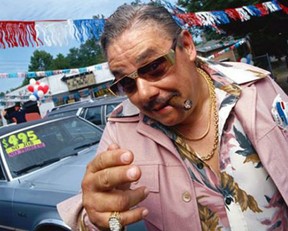 One of humanity's greatest boons is the Internet. You can use the web for just about everything these days.
One of humanity's greatest boons is the Internet. You can use the web for just about everything these days.
That especially goes for buying cars. There are so many used cars being advertised on the web at any given time, it's just not funny anymore.
When you browse the web and come across cars, your eye is bound to be cought by a specific car eventually.
Once this happens, resist the urge to immediately run out the door to purchase it. Instead, browse the web some more to find comparable cars.
A 'comparable' car is a car that has roughly the same build year, the same mile count, the same size, etc. Preferably, your comparison cars will also be of the same manufacturer as the one you are eyeing. The comparison cars you will look for, may very well be from other sites and other dealers.
Once you've found a handful of comparison cars, you can compare prices. Who knows, one of the comparison cars you've found may be priced even lower than the car you originally picked for yourself.
A lot of factors weigh in, though. One used car might be pricier than another one, but the pricier one may have a better maintenance history, or a lower mile count, etc. You have to use your common sense when making the comparison. There are too many possible situations for me to take you by hand.
Comparing prices of comparable cars is the first step to saving big money on used cars. Once you've made up your mind on which car you want to check out in real life, it's time to visit the dealer.
2. Visit The Car Dealer And Have A Talk About The Car
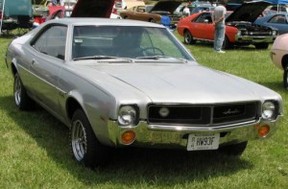 Okay, so you're at the dealer and you're having a look at the car that you might be interested in buying. Don't ask for the keys to the car just yet. Instead, have a talk about the car with your dealer. It's alright to have friendly chit chat about useless every day stuff. As a matter of fact, it's actually a pretty good idea. Get friendly with the guy. It can really help you get the car at a better price!
Okay, so you're at the dealer and you're having a look at the car that you might be interested in buying. Don't ask for the keys to the car just yet. Instead, have a talk about the car with your dealer. It's alright to have friendly chit chat about useless every day stuff. As a matter of fact, it's actually a pretty good idea. Get friendly with the guy. It can really help you get the car at a better price!
But don't let the friendly jibber jabber go on for too long. You're here to do business. The dealer's time is precious. Your time is precious. Eventually, you've got to 'talk car'.
When the subject comes up, ask the dealer about the car's history. Not only the maintenance history, but also the history of who owned it. You're usually better off with a car that was owned by a middle aged person than a car that was owned by a teenager who was still learning how to drive.
The latter one is more prone to getting involved in accidents. This increases the chance that the car has indeed been involved inaccidents. And this can be a real deal breaker. Because do you really want a car that has been banged up in a major accident? Who knows what invisible damage this crash may have done under the hood.
The more details the dealer will give you about the car, the better. Don't you like it when you get the full story on a car's history? It creates a feeling of trust. There are plenty of dealers out there that want to sell you problem cars so they themselves are rid of them.
When talking about the car's maintenance history, especially ask the dealer about when the timing belt was last replaced. This is such a crucial part of the car. It can damage your car very much if it snaps. And it will snap after a certain mile count. For that reason, it needs to be replaced every 60,000 to 70,000 miles or so.
Even replacing the timing belt in time will be expensive. You've got to know how many miles you've got left on your timing belt before you buy a car. You don't want to run into any surprises here.
Listen to your gut when visiting and talking to a dealer. If he doesn't provide you with good service and doesn't treat your respectfully, then just leave. Your precious time and money will be better spent elsewhere.
3. Walk Around The Car For A Visual Inspection
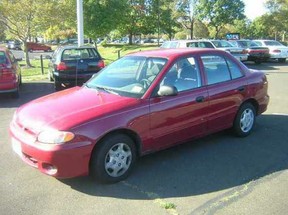 With all the above preparations out of the way, it's time to have a look at the car from the outside. Don't get in for a test drive until you've had a good look at the car.
With all the above preparations out of the way, it's time to have a look at the car from the outside. Don't get in for a test drive until you've had a good look at the car.
Walk around it and check it for exterior damage. It's nice to have a car that looks good on the outside. Make sure there aren't too many nicks and scratches on it that.
Also have a look at the tires. Whether or not a car has good tires makes a big difference. Some old cars have tires that have been completely dehydrated from standing in the sun for too long. These tires will be cracked. Most tires won't have cracks, however.
But then there is still the mile count left on the tires. Check out how deep the grooves of the tires are. Shove a penny in a groove and see if Lincoln's head disappears in the groove. The further down his head goes, the more mile count you've got left on the car.
Replacing four tires will cost you a few hundred bucks. When the car's tires are almost used up, make sure to negotiate for a better bargain.
While you're still outside of the car, also make sure to check the suspension. A car needs to have good suspension, because this is also a very expensive part of the car. You can easily check the suspension by gently pushing down onto the hood. If the car bounces right up without too much creaking, then the suspension is most likely in a good state.
Also make sure to check all the windows for cracks. Maybe you can think of other stuff to check for as well.
You can get a good idea of a car's state by simply having a good look at it and by listening to what your instinct is telling you.
After the visual inspection, it's time for the test drive.
4. Test Drive The Car And Get A Sense Of How Well It Functions
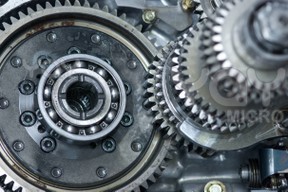 When test driving the car, you'll learn the most about it.
When test driving the car, you'll learn the most about it.
Many people will test drive a car for a few minutes, think to themselves that it's alright and then go ahead and buy it.
But by doing it this way, you might miss out on crucial information.
There are some very specific things that you need to be paying attention to while you are taking the car for a spin.
1. Engine
Listen to the car's engine when you fire it up. How long does it take to turn on? What did it sound like? Did it sound all stuttery or did it sound like it didn't have much trouble turning on at all?
Also listen to the car's engine while driving it. You will easily be able to tell a 'sickly' engine from a 'healthy' engine.
Car's with banged up engines are useless. You will always have to replace them sooner or later. And engines are so expensive.
When you're buying used cars in the $1,000 price range, don't bother with a car of which you suspect that the engine is going to blow in the coming years. The car will be a total loss at that point.
2. Gear Box
A car's gear box needs to be in good condition in order to justify paying the price for it. A car can have a decent engine, but you still won't get anywhere unless it also has a decent gear box.
Shift gears as you normally would while test driving, and pay attention to how well it goes. If the shift stick is easy to operate, then you're probably looking at a good gear box.
Gear boxes, like engines, are very expensive to replace. Make sure the gear box is well oiled so that you can operate the shift stick smoothly.
3. Acceleration
The engine and the gear box work together on getting the car in motion from zero to seventy (and sometimes higher, if you're a speed devil). The acceleration can speak volumes about a car.
Try to get up to speed quickly with the car. If a car is able to get up to speed quickly, then this is usually a good sign. It's another confirmation for you that the car's engine and gear box are in good shape.
4. Brakes
Most of us enjoy stepping on the gas one heck of a lot more than stepping on the brakes. The harsh reality of the situation is that you're going to have to decelerate every once in a while. Good brakes can come in handy at a time like this. You need good brakes in order to be safe.
During your test drive, try to find a quiet road. While going about thirty miles an hour and with no other cars behind you, step on the brakes and pay attention to how well the car decelerates.
A car with good brakes will be able to brake to a full stop relatively quickly and (this is very important) in a straight line. If the car swerves across the road left and right while braking, then the car isn't entirely safe.
The problem might be expensive to fix. New brakes will cost you a few hundred bucks. And that's for either the front only or the rear only.
5. Steering Wheel
Make sure to turn a few corners while you hare taking the car out for a spin. Does the steering wheel take you around corners easily? Or is operating the wheel a struggle with every turn you're trying to take?
Be sure to skip on a car that's got a steering wheel that fights back when you try to operate it. This stuff gets old really quickly. You need a car that lets itself be operated with relative ease.
Driving a car to and from work for an hour or two every day is already boring enough as it is. Don't ever let your daily drive become a struggle.
6. Lights
Check the car's lights. Turn them on, get out of the car and have a look at them. Either that, or have a friend stand outside the car and check them out while you operate them.
If a light is broken, it is usually easily solved by replacing a bulb. Sometimes, however, the cause for a broken light can be something else... such as a part that plays a role in handling your car's power.
An example part that can cause defective lighting, is the coulomb switch. If this is the cause of a broken light, then a replacement bulb won't fix it. You'll have to replace the switch. This can easily cost you a hundred bucks.
If the car's lights are working, there is no problem. If they're broken, ask the dealer to replace the bulb on the spot. If that doesn't solve the problem, there's something else wrong. If this is the case, bargain for a lower price or find another car.
Good Luck On Your Second Hand Vehicle Hunt!
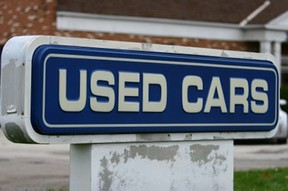 The guidelines I've given you above are by no means exhaustive. There is no doubt in my mind that there are hundreds of other things that you could think of when you're out shopping for a used car.
The guidelines I've given you above are by no means exhaustive. There is no doubt in my mind that there are hundreds of other things that you could think of when you're out shopping for a used car.
But the fact of the matter is, I wish I had known all of the above when I was about to buy my first car. This was well over ten years ago, by the way. The guidelines above can really help you prevent a lot of headaches.
How many people do you know that have complained about car trouble? If you've got as little as ten friends, family members or colleagues, odds are you've heard quite a bit of car trouble stories in your lifetime.
Everybody with half a brain understands that car trouble equals costs. Costs that you'd rather prevent. So don't be a thief of your own wallet and make sure to follow these pointers. Your chances of buying a good used car will increase manifold.
There is always the chance that you will experience car trouble despite following my advice. Like with everything else in life, there is no 100% guarantee on anything. But by heeding my advice, at least you will have the mental ease of knowing that you did all you could!
You might also like
How to Buy and Sell on Craigslist Cars for SaleUltimate Wizzley article on how to buy and sell on Craigslist cars for sale.
Buy, Sell, & Restore Your Auto on Free Classified AdsDo You Buy and Sell Autos? You may want to read here for some quick hints and...
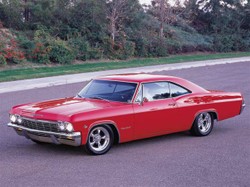


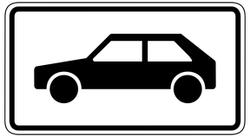

Comments